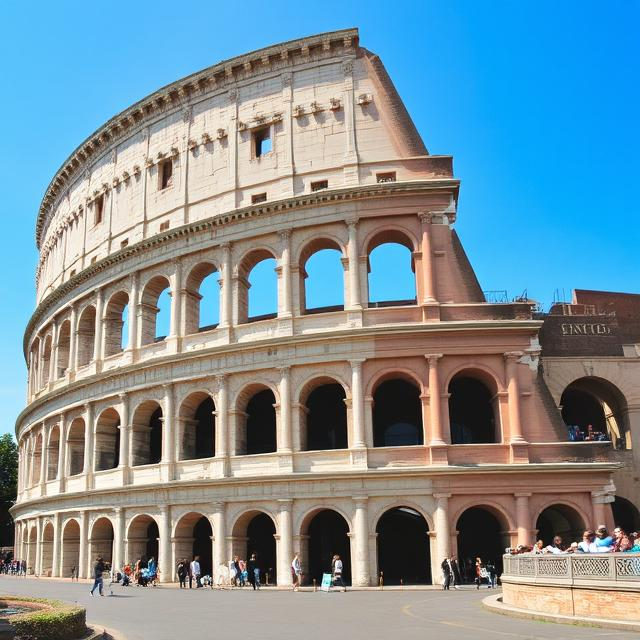The Colosseum, or the Flavian Amphitheatre, stands as one of the most iconic landmarks of Ancient Rome and one of the most recognizable structures in the world. Located in the heart of Rome, this immense oval amphitheater was built between 70-80 AD under the emperors Vespasian and Titus. With its monumental size and impressive engineering, the Colosseum was the site of gladiatorial games, public spectacles, and reenactments of historic battles, making it a central part of Roman entertainment. Today, it stands as a testament to Rome’s glorious past and attracts millions of visitors from around the world each year.
Walking up to the Colosseum for the first time is a mesmerizing experience. The sheer scale of the structure is overwhelming, with its towering outer walls made of concrete and stone still standing strong after nearly two thousand years. The Colosseum could originally hold up to 80,000 spectators, who would gather to witness grand events like gladiator battles, animal hunts, and mock naval engagements. The arena’s design allowed for incredible crowd control, with an elaborate system of exits and entrances that helped to manage the massive crowds, many of whom were common citizens of the Roman Empire.
Inside the Colosseum, the atmosphere is charged with history. The lower level, known as the arena, was once filled with sand to protect the combatants, and the blood of gladiators and wild beasts soaked into its floor. Today, the arena’s floor is missing, but you can peer down into the underground chambers where animals were kept in cages, and gladiators prepared for their battles. Visitors can explore the multiple levels of the amphitheater, including the upper tiers that once gave spectators breathtaking views of the events below. As you walk through the ruins, it’s easy to imagine the roar of the crowds and the intensity of the ancient spectacles that once took place.
The Colosseum’s design is an architectural marvel. Its complex system of arches and vaults was an engineering feat for its time, and it continues to inspire awe among architects and visitors alike. The amphitheater is an excellent example of Roman engineering, as it was built using a combination of stone, brick, and concrete, which helped to support its immense weight. It’s also one of the earliest examples of the use of the Roman arch, which allowed the structure to stand the test of time. The Colosseum’s enduring legacy as a symbol of Roman power and engineering excellence continues to captivate visitors and historians.
Despite the passage of time, the Colosseum has faced significant challenges, including earthquakes, fires, and looting, which have caused damage to parts of the structure. However, extensive restoration work has ensured its preservation, allowing visitors to continue experiencing this grand monument in its current form. In recent years, efforts have been made to improve visitor experience and accessibility, including audio guides and virtual tours that provide insights into the Colosseum’s history and function. These modern additions help tourists connect with the site, learning about its role in ancient Roman society and the lives of the gladiators who fought there.
Visiting the Colosseum is a truly unforgettable experience, offering a unique glimpse into the grandeur of Ancient Rome. It’s easy to understand why the Colosseum has remained one of the most visited tourist attractions in the world. As you stand in the shadow of this ancient marvel, it’s impossible not to be awe-struck by its history, significance, and the stories it holds. Whether you’re a history enthusiast, an architecture lover, or simply someone seeking to explore the heart of Rome, a visit to the Colosseum is an essential part of any Roman adventure, transporting you back in time to witness the epic spectacles of a bygone empire.

Leave a Reply